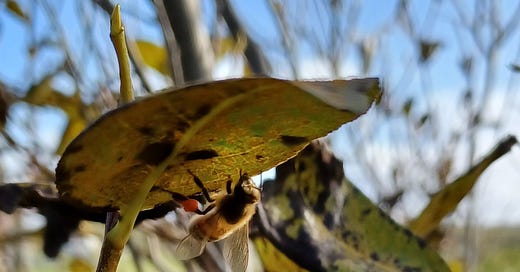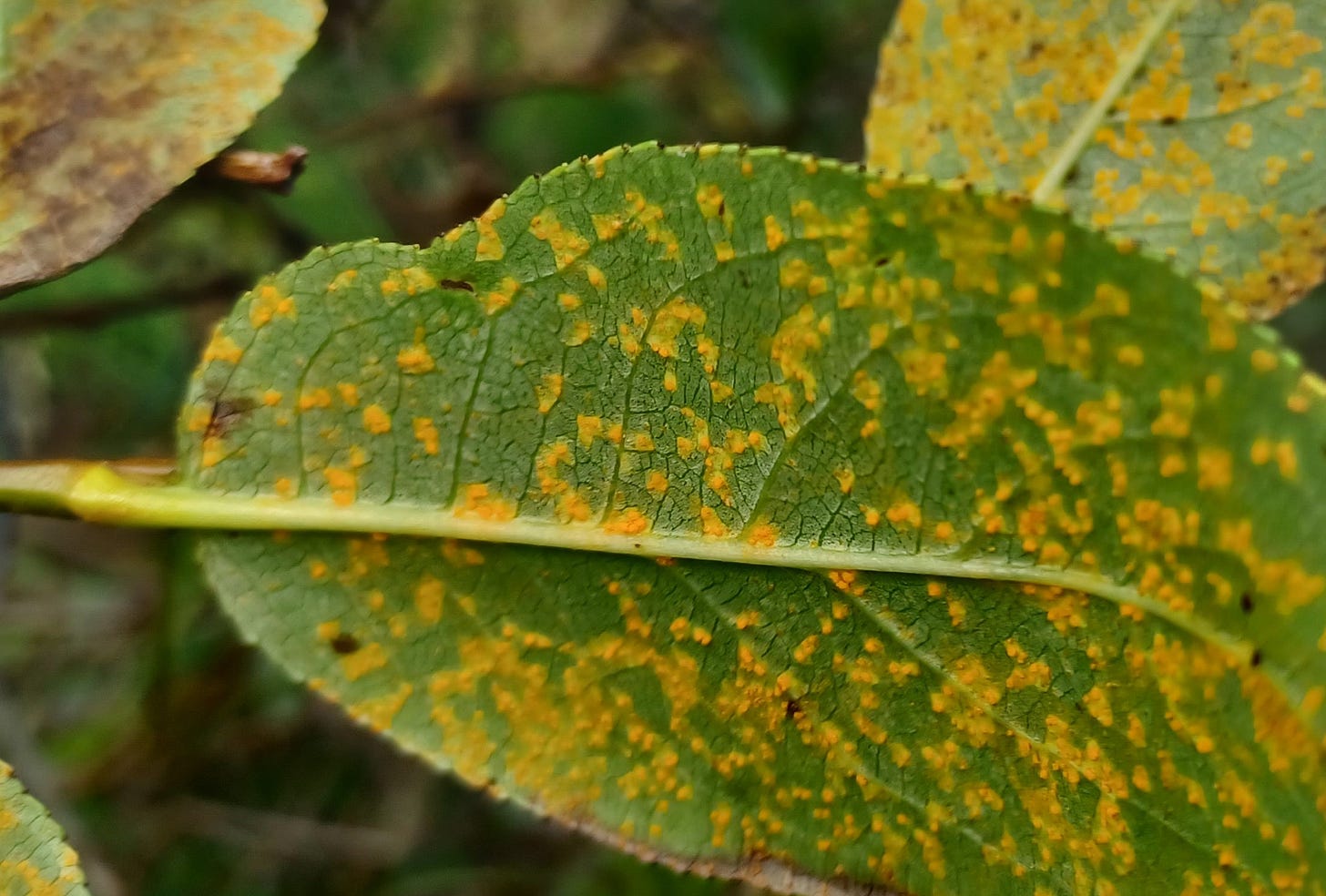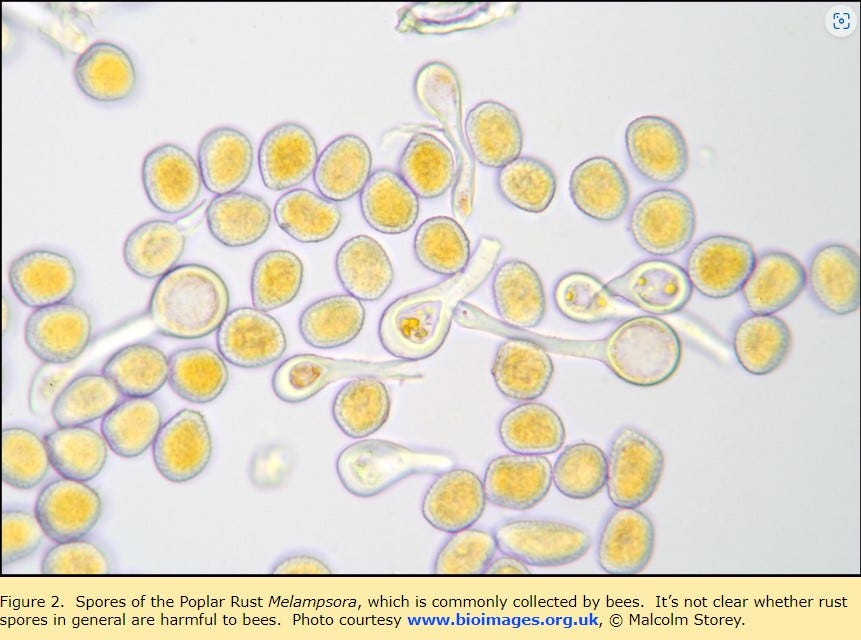“What is this life if, full of care,
We have no time to stand and stare.
No time to stand beneath the boughs
And stare as long as sheep or cows.”
From a Poem ”Leisure” [excerpt]
by
William Henry Davies
I WAS BUSY PRACTICING JUST THAT, in the garden on a sunny morning at the end of September, minding my own business, just looking.
I became aware of a buzzing above and around me. I was standing by a Bay willow tree, one I had planted a few years previously, and I realised it was bees, busy bees creating the buzz at the tree. But I also was aware that the pollen had long gone from this tree, so what on earth were they up to?
This tree had grown from a cutting taken from a bank of willow at the bottom of the croft, remnants of a long line of trees which had once grown along the burn here, I had taken to spreading them around to better preserve them. Sadly, I had also noticed that at the end of the summer the leaves had become infested by a bright yellow-orange fungus which was causing the trees to drop their leaves early.
Through the auspices of the Highland Biological Recording Group, I had learned that this was a willow tree rust fungus of a Melampsora species. Probably not causing serious damage to the trees but perhaps inhibiting their growth. Anyway, the leaves were yellowing, and the underside was covered in the spores of this fungus, it came off on my fingers when I rubbed the leaves, possibly not a good idea unless I wanted to spread the fungus. This is where the bees were.
Much to my surprise the insects, honeybees in fact, were landing on the underside of the leaves and proceeding to gather the fungal spores, stashing them in the pollen baskets on their hind legs. Each bee was clearly quite industrious, going by the obvious orange ‘sacks’ hanging by their legs. My thoughts progressed to wondering what was to become of the spores, were the bees actually going to pack it into the honeycomb along with the pollen other bees had presumably gathered?
Would they eat it? that seemed unlikely. Also, how would the fungal spores affect them if they did eat it? Or would it spread in the hives and cause problems there? A mystery indeed, I had never heard the like, is there some strange symbiotic relationship between honeybees and fungus which few people have ever heard about?
I have been trying to find out and it has been interesting reading. There are other recorded cases of honeybees taking fungal spores here in the UK and abroad, but I am not convinced that anyone knows why. It is possible that beekeepers of old noticed this, there was a comment addressing the fact in a newspaper published in the late 1800s. It had been suggested that in very poor years bees might take spores when pollen is scarce and 2024 has certainly been a dreadful year for pollinators.
Experiments have shown that the spores are not often eaten on their own but only as part of a mix with pollen. At one stage of the spore growth, it is supposed to taste quite sweet! Others believe the fungus may lend the bees some antibacterial qualities, either keeping the hive clean or their individual digestive gut processes clear. Some also suggest the fungi have a negative effect.
There is also the question of how is the fungus benefitting, if at all? Are the bees unwittingly spreading the fungal spores far and wide? Melampsora fungi outwitting the insects, the fungi win again!
Bees are amazing, fungi are amazing.
There is so much more to discover in our wonderful world.
What is this life, if full of care, we have no time to stand and stare?
Donald Mitchell is a High Life Highland Countryside Ranger, a keen observer of nature and wildlife, he dedicates his time to documenting and sharing insights about the natural habitats in North West Sutherland. With a particular interest in marine life, he aims to help others gain a deeper understanding and respect for the delicate balance of our ecosystem.







